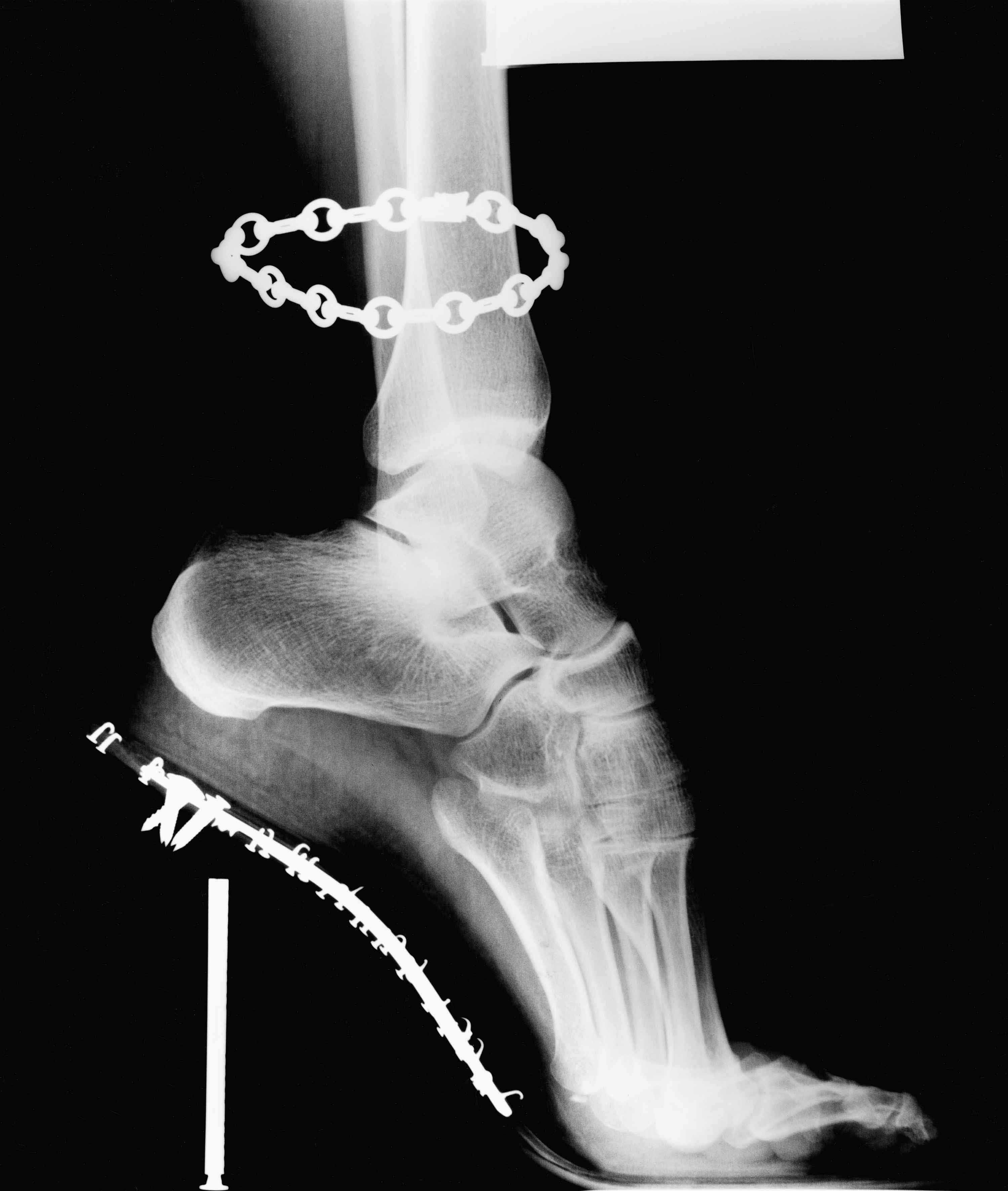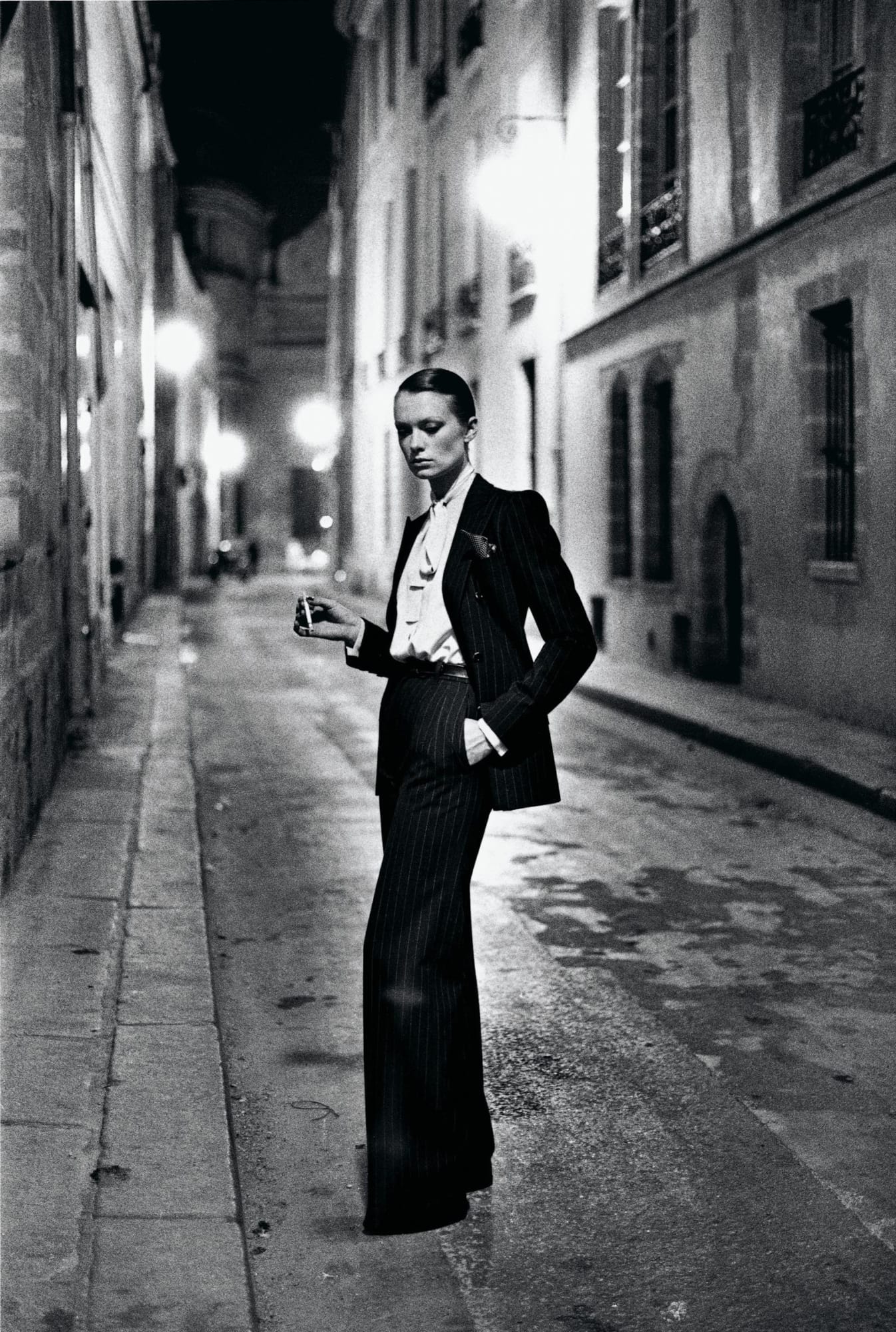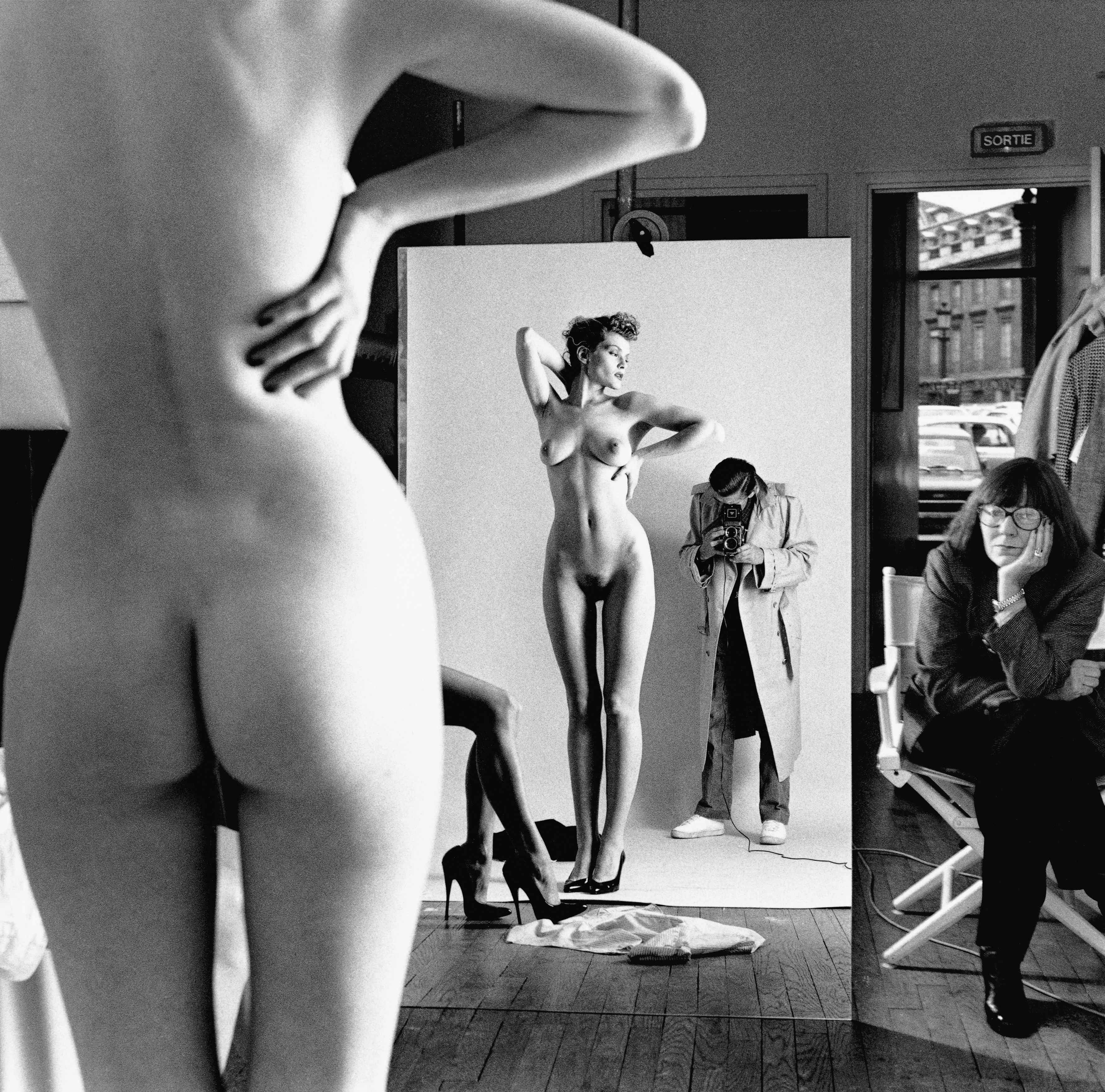Helmut Newton was born in Berlin in 1920 to a Jewish family, the son of Klara and Max Neustädter, a button factory owner. He purchased his first camera at the age of 12, and then worked for the German photographer Elsie Neulander Simon from 1936.
The increasingly oppressive restrictions placed on Jews by the Nuremberg laws meant that his father lost control of his factory.
Then, in November 1938, Newton’s father was briefly interned in a concentration camp on Kristallnacht, which finally compelled the family to leave Germany.
From those humble beginnings as a refugee, Newton rose to become one of the most celebrated fashion photographers of his generation – one credited with moving forward the depiction of women, and particular women’s sexuality, within the photography medium.

The majority of the works featured in the exhibition are vintage prints from the collection of the Helmut Newton Foundation in Berlin.
Women play a central role in Newton’s work. But this is also the reason why his work is often pigeon-holed as simply erotic, and why there’s insufficient appreciation of the intrinsic complexity and multi-layered nature of his oeuvre.
Newton started to photograph in the early 1950s, but his breakthrough didn’t come until the 1970s, with the photographs he produced on commission for French Vogue.
He quickly was talked of as a zeitgeist for an era of female emancipation. As a friend of Yves Saint Laurent and Karl Lagerfeld, he was at the forefront of a new wave of designers and photographers to try and change male-female dynamics in the fashion industry, while creating a new vision of femininity in the mainstream media.

Newton photographed primarily on location, using innovative scripts for his shoots. His women sometimes wore clothing more associated with menswear. They were dominant, totally in control; a far cry from the submissive figures that were such a part of European and American media and advertising throughout the preceding generation.
“He was all too aware that eroticism, seduction and desire primarily amount to a game of perception and of displaying an unattainable reality,” Foam said in a statement.

“Through the depiction of women and underlying themes such as power, violence, eroticism and desire, his work can be directly linked to themes in surrealism – one of the dominant artistic movements during the interbellum period when he was growing up in Berlin.
“Newton’s rich, authentic and complex oeuvre can be considered one of the most iconic of the last quarter of the 20th century.”
Helmut Newton – A Retrospective will run at Foam from 17 June to 4 September 2016.

